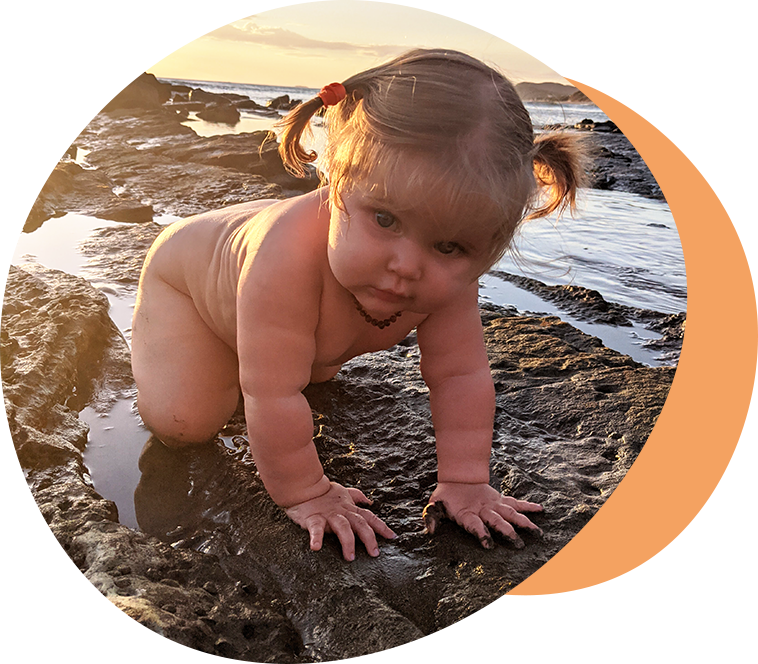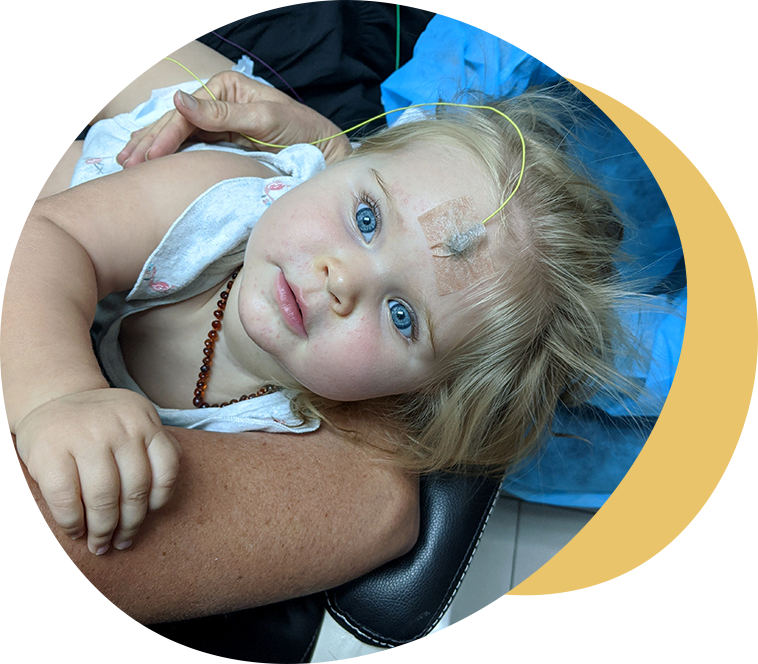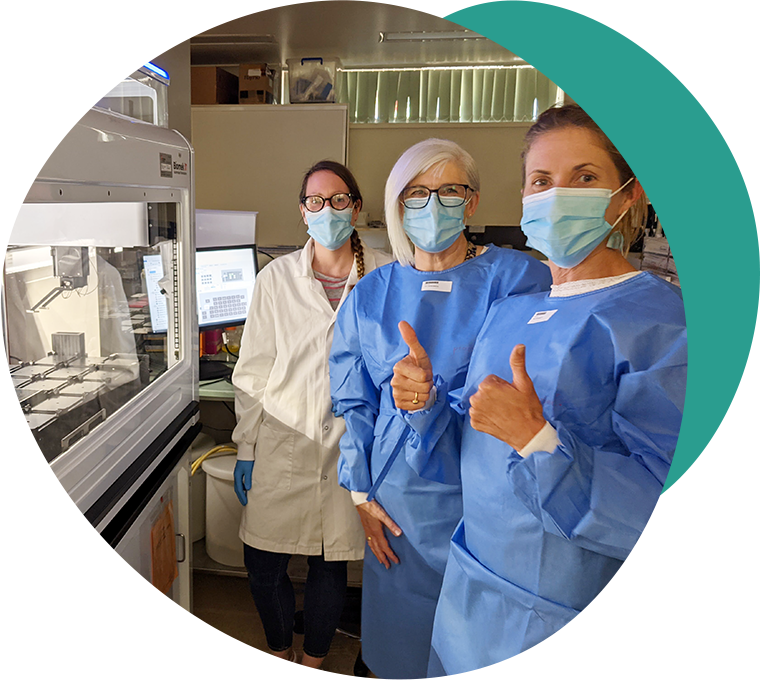
A Rare Event
In 2020, our shining 14-month daughter Tallulah Moon had just begun to walk and talk. She lit up our hearts with every milestone, laughing and dancing with her doting big brother, Finn. But then one day her dancing stopped.
Very suddenly, her legs stiffened. Her previously confident stride faltered; her tiny feet began to tip-toe, trip and scissor.
We tried hard not to panic as she resorted to crawling again. We rushed for immediate medical advice but nobody could quite say what was happening. We were scared, but we were also naïve. We couldn’t imagine anything “really bad” happening to our child. Meanwhile a tiny genetic mutation was giving rise to an insidious disease.
Soon Tallulah could no longer stand alone at all. Then her arms collapsed beneath her as she crawled. Tallulah’s strength was vaporizing, and she was as bewildered and helpless as we were. Within days, Tallulah could no longer talk or even hold up her head. When she started to choke on food and drink, we hurled ourselves into all-consuming state of terror and the hurried referrals for neurologists, blood tests, MRIs and nerve conduction studies could not come quickly enough.
The Search for an Answer
Over the space of several sleepless months, Australia’s public healthcare system searched tirelessly for a reason as to why our daughter seemed to be slipping away. Then, through sheer luck and the coordination of doctors across borders, we were able to slip Tallulah Moon into a rare genetic diseases study in Victoria.
This incredible study took a sample of Tallulah’s blood, and mapped every gene in her body. This method is known as Whole Genome Sequencing (WGS). Using this powerful diagnostic tool, researchers identified a disease-causing mutation on just one of her 30,000 genes. On 26 August 2020, on a seemingly perfect winter morning in Brisbane, our Tallulah Moon was diagnosed with Hereditary Spastic Paraplegia Type 56 (SPG56).


Diagnosis and Recovery
Receiving that diagnosis felt both relieving and crushing in equal parts. The probing and traumatic long nights in hospital could stop, at least for a while. But then came the words that still sit in our hearts like a heavy stone. Carefully and apologetically, the doctors explained Tallulah had a progressive disease without a known treatment or known cure. We were devastated.
The medical team collated what little information was available online. Given that Tallulah’s severe regression—her nearly complete loss of function—was an even rarer and more complex effect of this already rare disease, the prognosis was vague and ominous. They caringly suggested physical and speech therapies, to focus on love, and contact us periodically if and when things got worse.
We stumbled through all the emotions that come with being a parent of a child with a rare disease. There was shock, denial, guilt and grief. But with two young children eager for joy in their lives, we pulled ourselves out of the fog, and accepted our new situation as quickly and honestly as we could. We still had our baby to hold and love. And because the doctors didn’t know how long for, we could set our hopes higher than the skies.
Genetic Research is Hope
We cast the net wide and made connections with other families whose children are living with rare genetic diseases. We even found our SPG56 tribe. They are dotted around the globe, and while we haven’t had the chance to meet this small but important community in person, they have become as dependable as family.
Together, we have shared experiences, built resilience, and dived into stories of hope. Where rare diseases have not attracted the attention or research funding of big companies, here in this vast network, we found families doing it on their own. We learned about many incredible research projects parents had crowdfunded to find gene therapies and repurposed drugs to combat rare genetic diseases.
In June 2021, after many months of researching, meeting with scientists, interviewing genetic institutes, and building Tallulah’s very own research team, we have funded research for a gene therapy and drug discovery project for SPG56.
In August, we established a charitable foundation called Genetic Cures for Kids. It is with so much excitement, hope and love that we launch the foundation’s first mission- ‘Our Moon’s Mission: to cure SPG 56’.


